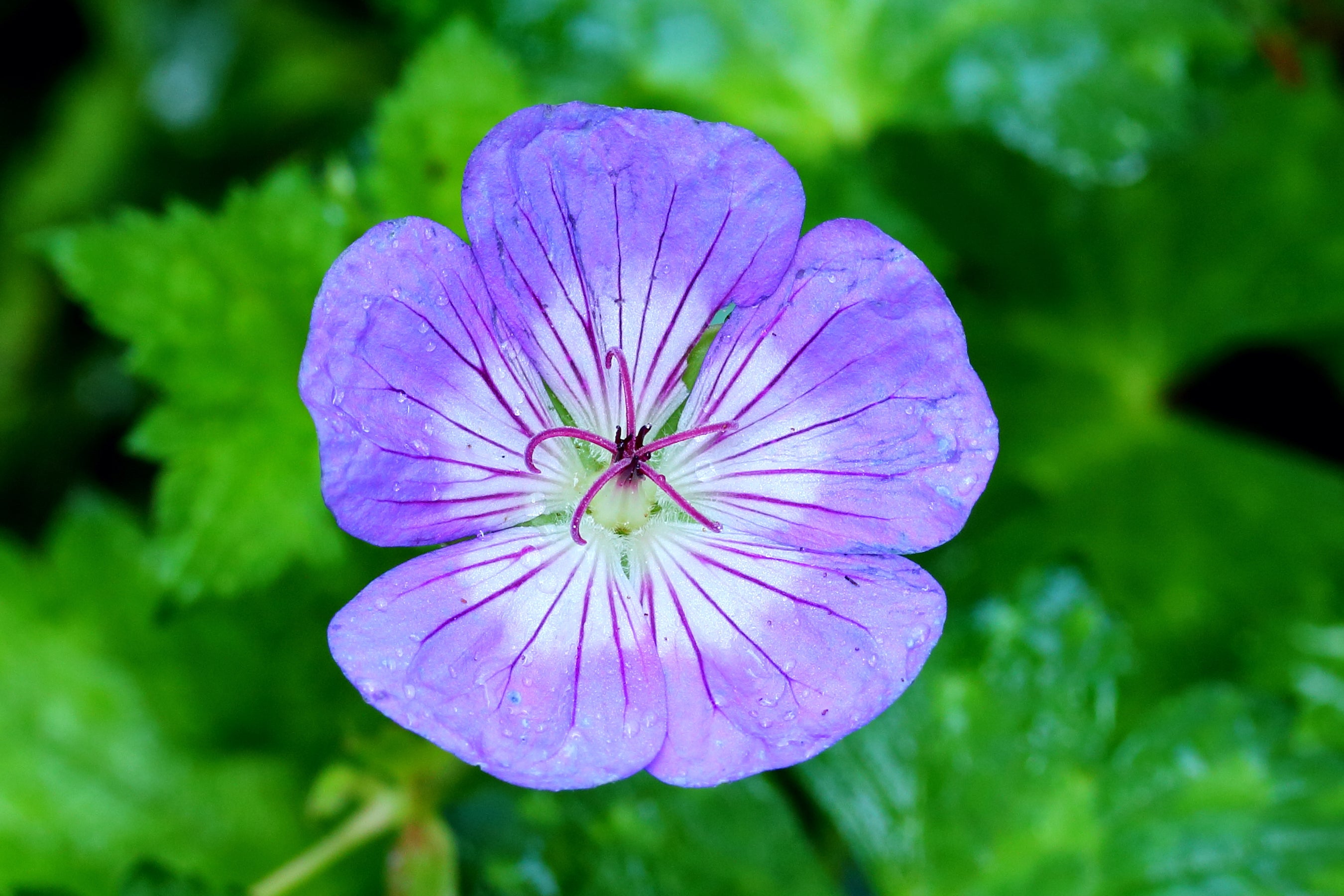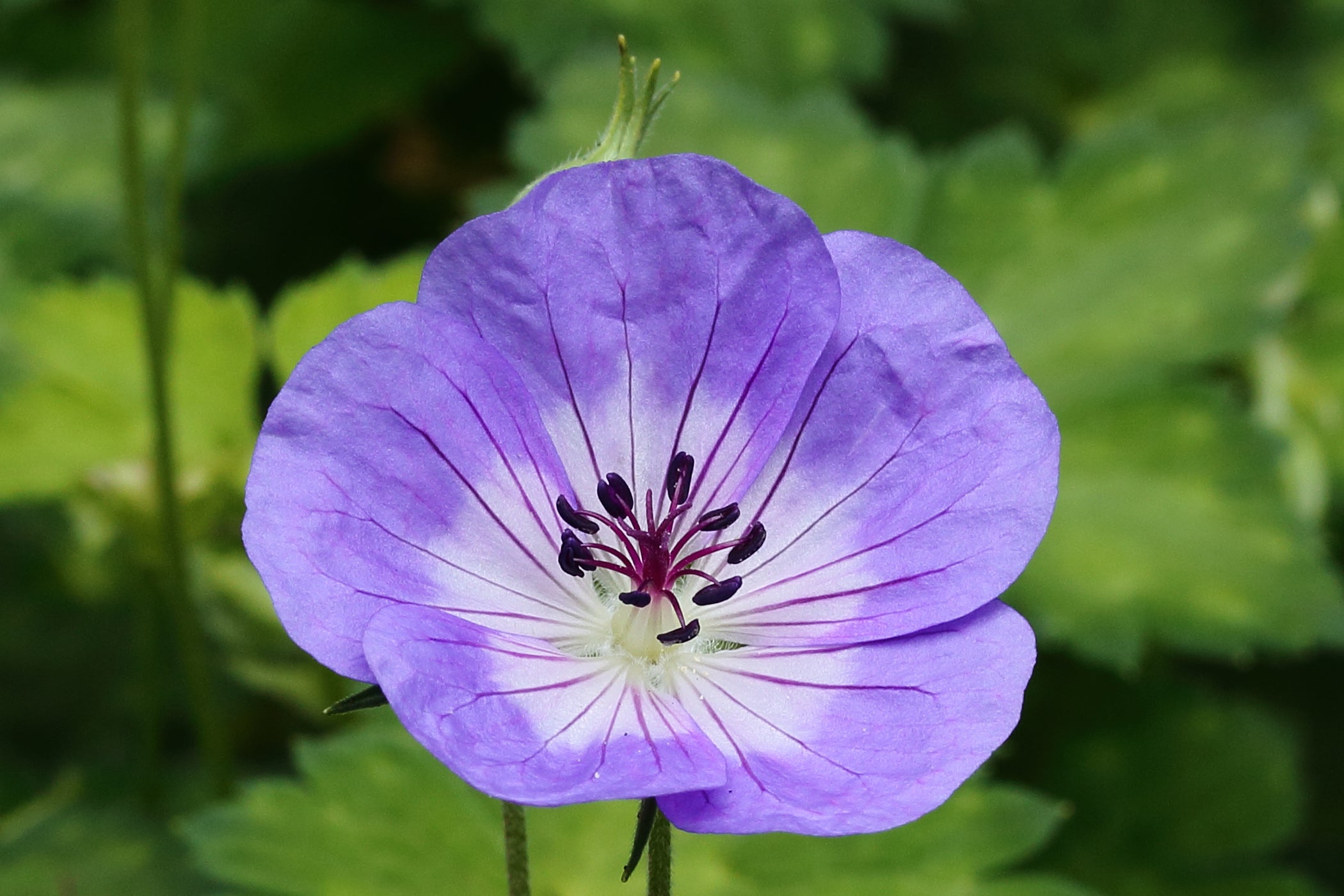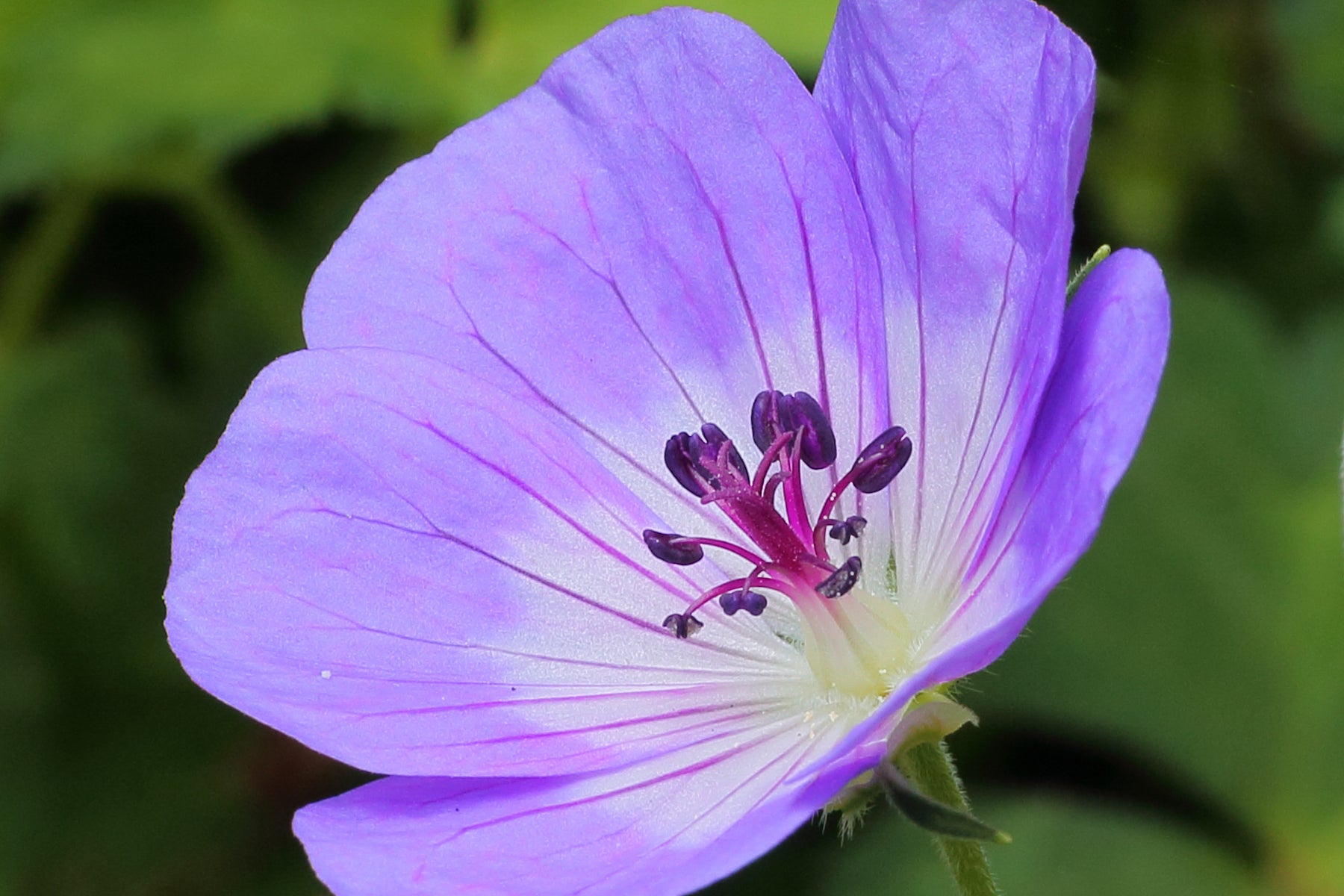Geranium wallichianum 'Buxton's Variety'
Approx. 0.5 litre pot
About this cultivar:
Geranium wallichianum 'Buxton's Variety' was raised and introduced by Mr E. C. Buxton, Betws-y-Coed, Wales, sometime in the 1920s. Originally described by A T Johnson in 'A garden in Wales', 1937, as 'E. C. Buxton's Variety'. So this is an old one...they're often the best tho, aren't they?
Anyway, it is a low, spreader with trailing stems bearing saucer-shaped light violet-blue flowers with a large white central zone and dark veins. Parent plant of the famous 'Rozanne'/'Gerwat' this is very similar except if flowers later in the year.
The species Geranium wallachianum, commonly called Wallich geranium or Wallich cranesbill, is a prostrate species which spreads by its trailing stems. It is named for Danish botanist Nathaniel Wallich (1786-1854). Wallich was superintendent of the Royal Botanic Garden, Calcutta, from 1817 to 1846 where he prepared a catalogue of more than 20,000 specimens, known informally as the 'Wallich Catalogue'. 20,000 - can you imagine?
- Position: Full sun, partial shade
- Soil: Almost any soil, grows well in Ballyrobert
- Flowers: July, August, September, October
- Other features: Grows well in Ballyrobert
- Hardiness: H6 - Hardy in all of UK and northern Europe (-20 to -15°C), Fully hardy - grows well in Ballyrobert!
- Habit: Clump forming, bushy, trailing
- Foliage: Deciduous
- Height: 15 - 45 cm (0.5 - 1.5 ft)
- Spread: 60 - 90 cm (2 - 3 ft)
- Time to full growth: 2 to 5 years
- Plant type: Herbaceous Perennial
- Colour: Green, pink, purple
- Goes well with: -
About this genus:
Geranium is a genus of 422 species of flowering plants found throughout the temperate regions of the world and the mountains of the tropics, They come in a variety of shapes and sizes and the five-petaled-flowers can be white, pink, purple or blue, often with distinctive veining. The genus name is derived from the Greek géranos meaning ‘crane’. The common name is‘cranesbill’. Why the crane reference? Well, some species in the Geranium genus have a distinctive mechanism for seed dispersal. This consists of a column which springs open when ripe and casts the seeds some distance. The shape of the unsprung column looks like the bill of a crane- therefore cranesbill!
Geranium is often confused with its close cousin Pelargonium (florist geranium). The two plants were originally lumped into the one genus (genus Geranium), but in the 1780s, the genus Pelargonium was split from Geranium. However, by that time the common name "geranium" for the florists plants was part of the public vernacular and it stuck.
Geraniums are not as flashy as many perennials, but are getting more and more popualr again as newer cultivars become more floriferous and for longer. The attractive foliage of Geraniums, combined with their blendable, butterfly-attracting, spring and summer flowers, make geraniums staples in the perennial garden.
The genus geranium has long been recognized as one of the most durable and easy to grow perennials for the garden. They love sun or part shade and will grow in any soil that isn't waterlogged.
How to use them? Oh, the list is endless and often depends on the specific geranium, its height, habit and colour - they are not just "ground cover" plants!






